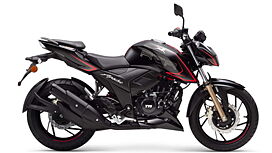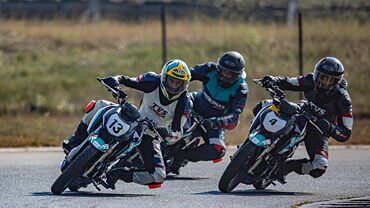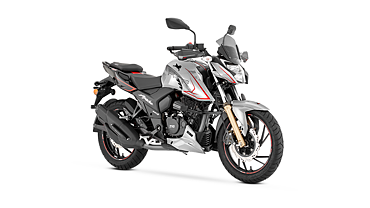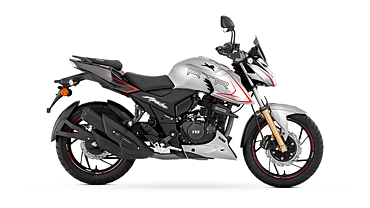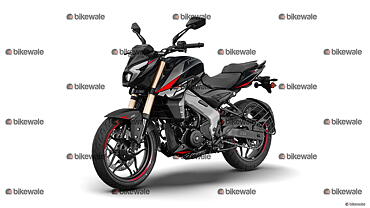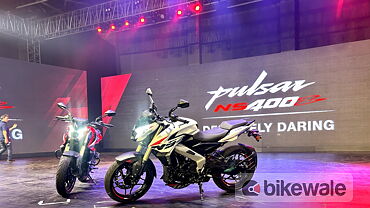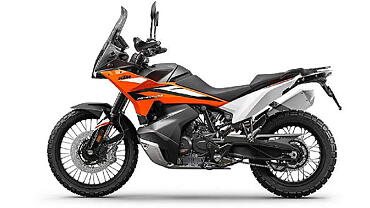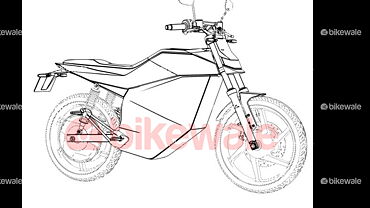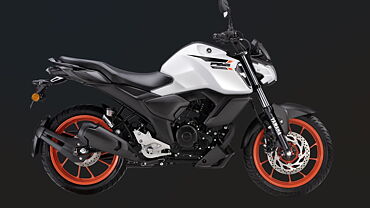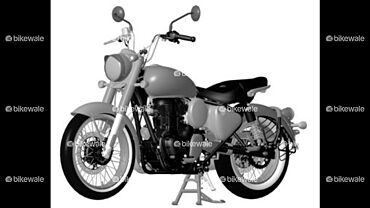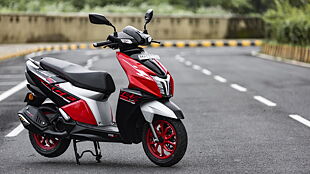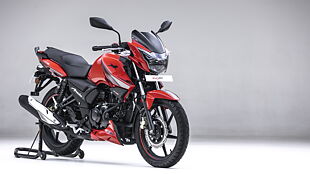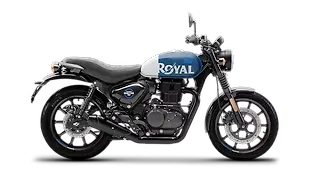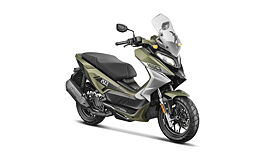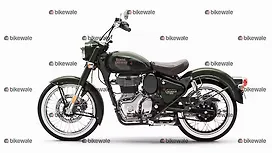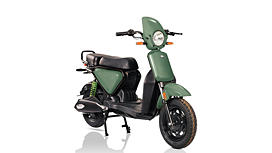Introduction

‘All the best! Do Qualify.’ That’s the exact text I received from my boss on the eve of the 5th edition of the TVS Young Media Racer Program (YMRP). And, as much as it built the pressure on me to qualify, it also set the tone right for the rest of the day. After all, who wouldn’t want to learn the basics of track racing from experienced racer-turned-coaches? And, my accomplice for the weekend was none other than the race-prepped TVS Apache RTR 200 4V.

I was among the 15 media journalists, invited by TVS for this year’s Young Media Racer Program. Now, being in my mid-30s, I’m far from being young, and given the few extra kilos, I’m nowhere near being fit. But, that didn’t dissuade my resolve to learn track riding by a zilch. So, did I qualify? Read on to know more.
The Racing School

Held at the MMRT (Madras Motorsport Race Track), the TVS YMRP is designed to offer novice riders like me, an opportunity to learn the basics of motorcycle racing, while also educating us on the finer details like track etiquettes, regulations and more. The YMRP includes the theory classes, followed by training sessions on track and eventually the qualifiers. Once qualified, you get to race with fellow racers in a three-race season. Now, let me take you through the process of training, practice and qualification.
Training
Session 1 – Track Etiquettes, Racing Lines, and Flags

The first session started with an overview of the track layout, a rundown on the basic track etiquettes, and the various flags that one needs to understand. Our coach, ex-TVS factory racer, Harry Sylvester ran us through the most important part of this session – racing lines. According to Harry, “It’s simple! Follow the ‘Out-In-Out’ pattern, while approaching a corner”.
Basically, you start from the outer edge of the corner, cut sharply inside onto the apex, and then exit towards the outer edge of the corner. This approach not only helps you with quicker entry speeds but also faster corner exits.

So, armed with a wealth of knowledge and a lot of enthusiasm, it was time for me to put all the learnings into practice. However, due to the incessant rains the previous night, we were restricted to use the short loop, as the rest of the track was still filled with puddles. Anyway, we suited up and hopped onto our race-prepped TVS Apache RTR 200 4Vs. We were divided into two groups, with Jagan Kumar being our instructor and KY Ahmed for the other group.

The drill required us to ride in 4th gear with strictly no brakes. My confidence started building as I applied all the learnings into practice. The cherry on top was when I had to shadow Jagan Kumar, trying to follow his lines, braking markers and turn-in points.
Session 2 – Body Position and Vision

You’d often hear the coach saying, ‘Look where you want to go, and you will be there.’ As clichéd as it sounds, it works like magic. The idea is to look as far as possible while turning into a corner and apply the same technique during exits. The other part of this session was body positioning. Here, we were taught to slide out of the seat, with half of your bottom out along with the knee and elbow pointing in the direction of the turn.

But, the important part of the learning is to swiftly slide out on the seat, rather than hopping on it. The latter upsets your rear suspension, and may even cause a crash if you aren’t careful. As easy as it may seem, it is equally difficult to do this in synchronization. Even after five practice laps, I was struggling with getting both right at the same time.
Session 3 – Race Start, Braking and Free Practice

For the final session of race starts and braking, we were summoned to the start-grid, where Harry helped us perfect the race start. The drill involved engaging the front brake firmly, while partly pulling the clutch, and maintaining the throttle at around 5,000rpm. Once you feel the clutch’s bite point, and the front forks are loaded, drag the clutch gradually without dumping it, and progress through the gears while gradually increasing the throttle. Dumping the clutch would result in an unexpected wheelie, which may ruin your race start.

In the braking session, we were required to go full-throttle on the home straight before applying brakes after a set marker (cone), while downshifting the gears simultaneously. In the first attempt, I braked quite hard, while dumping the clutch. Result – the rear started sliding, scaring the wits out of me. So, in the second attempt, I was cautious to brake optimally, while downshifting through the gears and using engine braking to come to a stop. Needless to say, my braking distance improved significantly.

With the final set of theory and practice sessions done, we were given 15 minutes of free practice to apply all the learnings at once. I’d be lying if I said I wasn’t nervous. I committed quite a few mistakes in the initial laps but quickly rectified them in the following laps. With a fair idea of the race track and all the practice, it was time for the qualifiers.
The Qualifier

It was finally time, and Vikrant’s words were reverberating in my head. The pressure to qualify was immense and all I had were five laps between me and qualification. Keeping a cool head, I went into the sighting lap, before going full-throttle lap after lap. In pursuit of the qualification, I pushed my limits to extract all the performance out of the Apache RTR 200 4V.

Coming back into the pits, the officials collected the transponders from our bikes to record the best lap times. With only 12 slots in contention, I expected myself to be somewhere in the 10th position. But, as it turned out, with the best lap time of 1:28:426s, I qualified in the sixth position for the 2021 edition of the TVS Young Media Racers Program.

I couldn’t have been happier. Sure, the race-prepped Apache RTR 200 4V was the key to my success, but a major part of it has to be attributed to the TVS YMRP program. For, the training and practical sessions provided by the TVS coaches not only enabled me to be better on track but also on the roads. Now, onto the next chapter – my first-ever race! And, I can’t contain my excitement.
Gallery
1/14
Right Front Three Quarter
Double Tap to Zoom











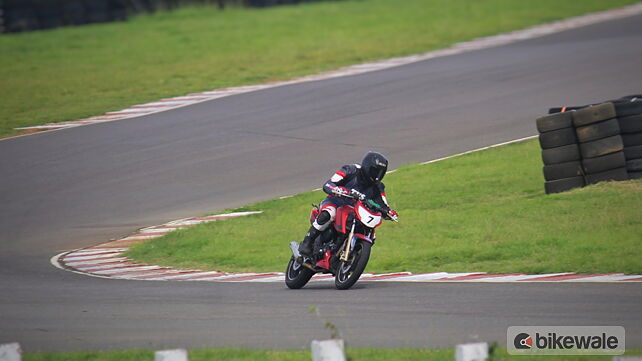







![[object Object] ThumbNail Images [object Object] ThumbNail Images](https://imgd.aeplcdn.com/642x361/n/cw/ec/105165/left-front-three-quarter7.jpeg?isig=0&wm=2&q=80)
![[object Object] ThumbNail Images [object Object] ThumbNail Images](https://imgd.aeplcdn.com/642x361/n/cw/ec/105165/right-front-three-quarter11.jpeg?isig=0&wm=2&q=80)
![[object Object] ThumbNail Images [object Object] ThumbNail Images](https://imgd.aeplcdn.com/642x361/n/cw/ec/105165/front-view12.jpeg?isig=0&wm=2&q=80)
![[object Object] ThumbNail Images [object Object] ThumbNail Images](https://imgd.aeplcdn.com/642x361/n/cw/ec/105165/front-view13.jpeg?isig=0&wm=2&q=80)
